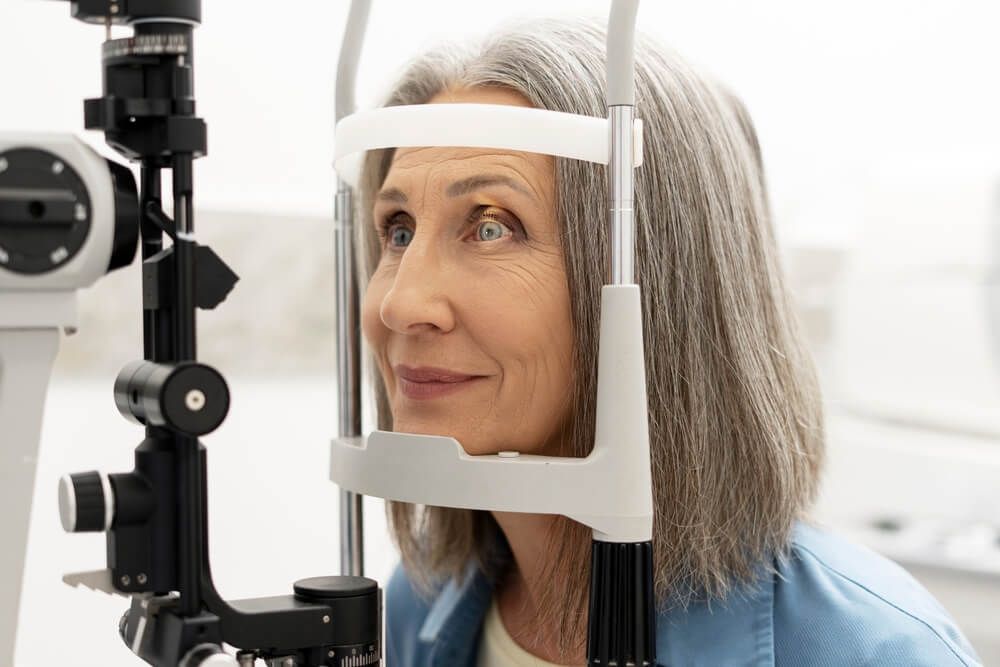As we grow older, our bodies experience a natural evolution—and the eyes are no exception. Age-related vision changes are common, but they can also signal the onset of more serious conditions like cataracts and glaucoma. Seniors are at greater risk of developing eye diseases that can lead to permanent vision loss if left undetected. Regular, comprehensive eye exams become essential not only for updating prescriptions but for preserving long-term eye health and overall quality of life.
At Colorado Eye Clinic in Greenwood Village, Denver, Dr. Abed Namavari emphasizes that many vision problems in seniors are preventable or manageable—if caught early. Regular eye exams are the foundation of proactive care. These exams are much more than a vision test; they involve a detailed evaluation of eye structures, intraocular pressure, and the early signs of age-related diseases. For seniors, they are a vital part of maintaining independence and avoiding complications that can affect mobility, mental health, and safety.
What Happens During a Comprehensive Eye Exam?
A comprehensive eye exam is a thorough assessment of your vision and eye health. For older adults, this exam includes several components designed to detect issues that may not yet present symptoms. Early-stage glaucoma, for example, can cause irreversible damage to the optic nerve long before any noticeable vision loss occurs. Cataracts, on the other hand, develop gradually and often go unnoticed until they significantly affect daily activities.
During the exam, Dr. Namavari will measure visual acuity, assess how the eyes work together, and use dilation drops to get a full view of the retina and optic nerve. The exam also includes tonometry, a test that measures intraocular pressure—an essential step in identifying glaucoma. With the help of modern imaging tools like optical coherence tomography (OCT), subtle changes in the retina and optic nerve can be identified long before vision is affected. These tools allow for early, accurate diagnosis and better long-term outcomes.
Cataracts: A Common but Treatable Concern
Cataracts are one of the most prevalent eye conditions among seniors. They occur when the natural lens of the eye becomes cloudy, often due to aging and UV exposure. This cloudiness leads to blurred vision, faded colors, difficulty seeing at night, and increased sensitivity to glare. While cataracts are a normal part of aging, they can significantly impact daily life when left untreated.
Fortunately, cataract surgery is a safe and effective solution. The cloudy lens is replaced with a clear artificial intraocular lens (IOL), often restoring vision almost immediately. Dr. Namavari provides personalized evaluations to determine the right time for surgery and discusses lens options tailored to each patient’s visual needs. During routine eye exams, he monitors the progression of cataracts and helps seniors make informed decisions about treatment when the condition begins to interfere with daily tasks.
Glaucoma: The Silent Threat to Senior Vision
Unlike cataracts, glaucoma is not a condition that can be felt or seen in its early stages. Often called the “silent thief of sight,” glaucoma typically causes no symptoms until it has already caused permanent damage to the optic nerve. Seniors are especially at risk, and the likelihood of developing glaucoma increases with each passing decade.
The most common type of glaucoma, open-angle glaucoma, develops slowly and can lead to gradual vision loss starting with the peripheral field. Without regular eye exams, it’s easy for this loss to go unnoticed until central vision is affected. Dr. Namavari, an experienced ophthalmologist and glaucoma specialist, uses a combination of pressure testing, optic nerve imaging, and visual field tests to detect and monitor this condition. When diagnosed early, glaucoma can be managed effectively through medications, laser therapy, or surgical procedures to lower intraocular pressure and preserve vision.
Why Seniors Need More Frequent Eye Exams
While younger adults may be able to go two years between eye exams, the recommendation for seniors is much more frequent. The American Academy of Ophthalmology suggests that adults over 65 receive a comprehensive eye exam at least once every year. This frequency helps detect changes in eye health quickly, especially for those already diagnosed with conditions like cataracts, glaucoma, macular degeneration, or diabetic eye disease.
In addition to disease detection, these exams also help ensure that seniors are wearing the correct prescription, which is essential for preventing falls, maintaining independence, and enjoying daily activities like reading, driving, or socializing. At Colorado Eye Clinic, Dr. Namavari encourages seniors to think of eye care as part of their routine health checkups, just like seeing a primary care doctor or managing blood pressure.
Supporting Vision Health Beyond the Exam Room
A comprehensive approach to senior eye care extends beyond the clinic. Lifestyle changes, protective habits, and medication adherence all play a role in maintaining vision. Dr. Namavari often counsels patients on practical steps they can take at home to protect their eyes, such as wearing sunglasses with UV protection, managing chronic conditions like diabetes or hypertension, eating a diet rich in antioxidants, and avoiding smoking.
When vision changes occur, seniors may also need guidance in adapting their homes and routines for safety and comfort. Improved lighting, magnification tools, and large-print reading materials are just a few simple strategies that can make a meaningful difference. Family members and caregivers are also encouraged to stay engaged in the process, helping monitor symptoms and ensure that appointments and treatments are kept on schedule.
The Value of Long-Term Eye Care Partnerships
One of the greatest benefits of establishing care with an experienced ophthalmologist like Dr. Namavari is continuity. Seniors often experience gradual changes that need to be tracked over time to detect patterns and adjust treatment accordingly. A long-term partnership with a trusted eye care provider ensures that no subtle change is overlooked and that patients receive timely interventions when needed.
At Colorado Eye Clinic in Greenwood Village, Denver, patients receive compassionate, individualized care in a supportive environment. Whether managing complex conditions like glaucoma or planning for cataract surgery, seniors are guided through every step of their eye health journey with clarity and confidence.
See Clearly, Live Fully
Healthy vision is key to aging well. It affects mobility, social engagement, mental health, and overall independence. With regular comprehensive eye exams, conditions like cataracts and glaucoma can be managed or even prevented from impacting quality of life.
Dr. Abed Namavari and the team at Colorado Eye Clinic are dedicated to helping seniors in Greenwood Village and throughout Denver protect their sight with expert care and personalized support. Don’t wait for symptoms to become serious—schedule your eye exam today and take a proactive step toward lifelong vision health.
Sources:
- Klein, B. E., & Klein, R. (2003). The prevalence of age-related eye diseases and visual impairment in aging populations. Archives of Ophthalmology.
- Quigley, H. A., & Broman, A. T. (2006). The number of people with glaucoma worldwide in 2010 and 2020. British Journal of Ophthalmology.
- West, S. K., & Congdon, N. (2002). Cataract surgery and visual functioning in the elderly. American Journal of Ophthalmology.

